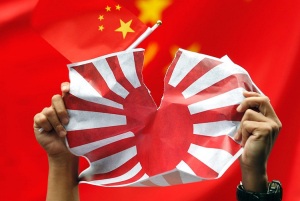
Why did the Chinese government decide to drastically worsen its relations with Japan, and, respectively, with the US?
It may seem that the conflict around the Senkaku Islands is necessary for the PRC’s government as another reason to create an armed conflict with the Land of the Rising Sun. However, that is not the case. There is no reason to believe that the matter is moving towards that end, that China aims to start a war against Japan and drag the United States into it.
It is an island conflict, which is not by chance. It is obvious that, even when the Chinese government was taking a decision to increase the tension in its relations with Japan, this tension was meant to be of a local nature. Looking for the analogy in global politics, the Anglo-Argentine conflict around the Falkland Islands (the Maldives) stands out. As is well known, that conflict was resolved following several military maritime operations supported by aerial attacks and a very limited contingent of landing troops. Thatcher did not threaten to use nuclear weapons against Buenos Aires or to occupy Argentina. The end did not justify the means.
An armed conflict because of Senkaku, should it happen, will also involve only limited means, but it will require attracting a significant amount of support not only from Japan, but also from the US, with which Japan has signed a treaty for joint defence. It is unlikely that Washington will want to risk one of its aircraft carriers for the sake of a “few rocks in the sea”, but it will still have to keep a powerful carrier battle group nearby.
There are no particular doubts that the conflict was initiated by the Celestial Empire.
It is possible that the PRC’s actions are one of the graphic examples of “asymmetric diplomacy”. Let’s look at some facts. The conflict around the archipelago entered the active phase last summer. It had become clear by then that the ultimate goal of the US in the Middle East was going to be Iran. The latter, as is well known, is one of the largest exporters of oil to the PRC. According to the BBC, China has long been promoting the yuan as an international currency which can compete with the US dollar. For example, Beijing opened an offshore trade operations centre in London in addition to the one which already operates in Hong Kong.
China buys crude oil from Iran and pays for the supplies with its national currency – the yuan. The proceeds are used by Tehran for purchasing goods and services from China. This was confirmed at some point by the then ambassador of Iran to the United Arab Emirates, Mohammad Reza Fayad. Clearly, Iran’s sale of oil for yuans undermines the hegemony of the US dollar, the emission of which is the main source of income of the US. When it comes to ensuring that the US dollar retains its status as a global currency and the main means of payment when purchasing oil, the White House will not compromise.
Since Iran is one of the most important trade partners of the PRC and ensures the steady economic growth of the latter, the task of the Chinese government is to maximally counteract the plans of Washington’s administration in the Middle East.
But how can the PRC significantly impede the actions of the US?
Let’s have another look at the facts. Only one operation in Afghanistan in 2014 will cost the US $79.4 billion, which is more than 10% of the total budget of the Pentagon. This is a huge amount of money. The number of US soldiers in Afghanistan is currently 66,000 people. Judging by the spendings and the number of deployed troops, the US is leading here a full-fledged war. In case of intrusion in Iran, Washington will end up with another front, which it may find undesirable. This is, probably, why the Obama administration is raising the question of reducing the number of troops in Afghanistan, in the order of 6 to 20 thousand.
Let’s suppose that Obama decides to involve in the operations in the Middle East not only the Islamist mercenaries, but also the armed forces of the US. The military capacity of this country is such that it is capable to engage in two local conflicts at the same time, but even this country can hardly take part in three wars at a time. If at a certain point, the conflict around the Senkaku archipelago enters the escalation phase, this can most likely force the entire US military machine into the overload mode.
In conclusion: The US economy depends nowadays on the printing press of the Federal Reserve System. The dollar’s purchasing power is plummeting at an alarming pace, which is no secret to anyone. The best way to finish off the financial system of the US would be the country’s engagement in the endless chain of military adventures and the increase in the Pentagon’s military spendings.
If the US administration wants the only world superpower to collapse, then why not let Beijing facilitate them in that?
Konstantin Penzev, writer, historian, columnist for the online magazine New Eastern Outlook.
